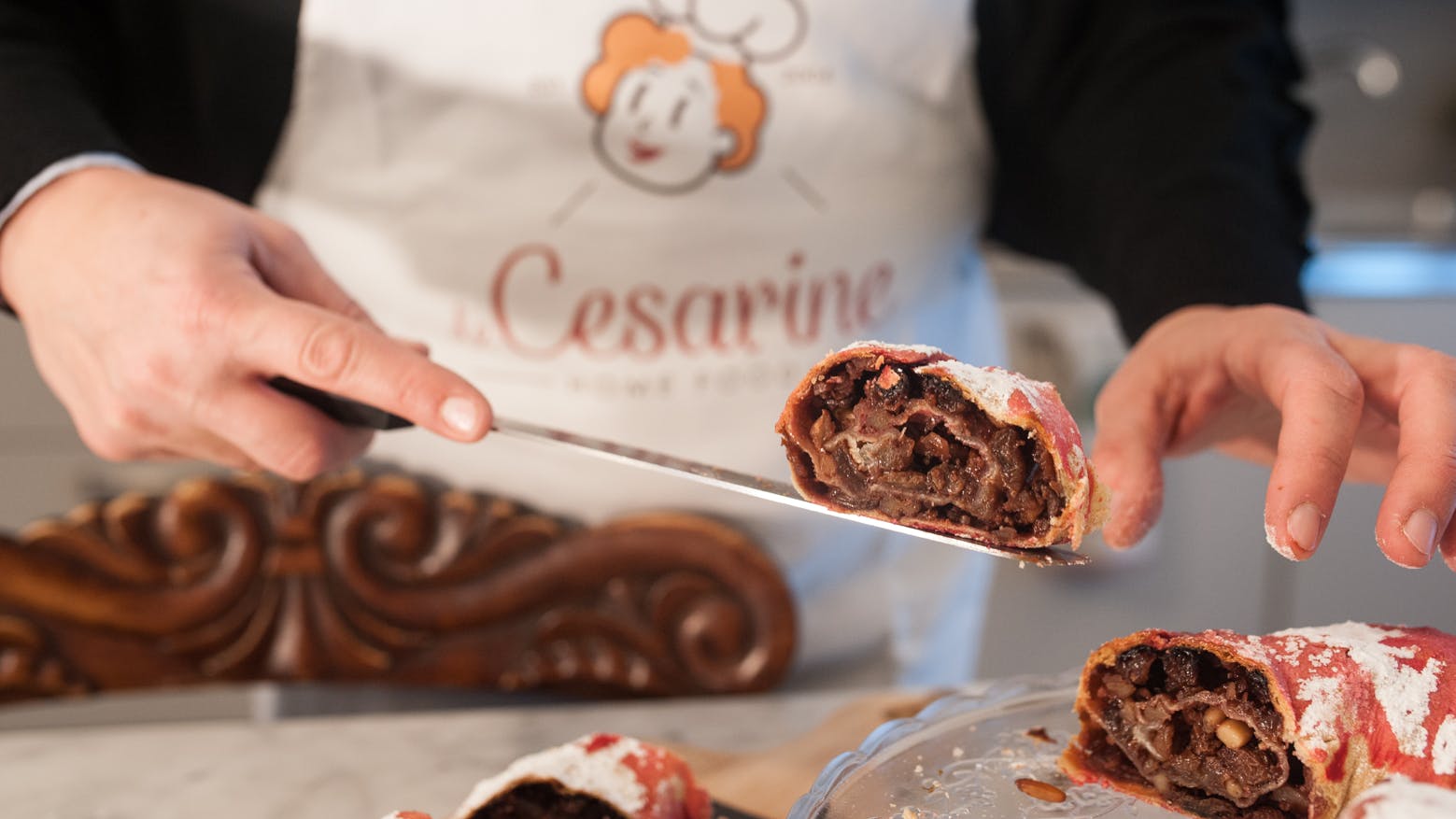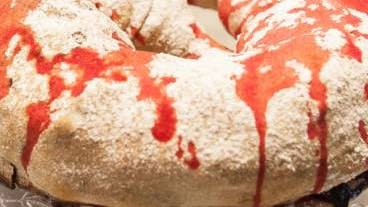

This is a typical recipe from Foligno, traditionally prepared on All Souls' Day, November 2nd. Nowadays, any special occasion is a good excuse to make Rocciata! Each family has its own version, passed down through generations: each one is unique, but all are equally delicious and tasty. It is a simple dessert, like the people of this land, and anyone lucky enough to taste it at least once comes into contact with a piece of Foligno family history.

Umbrian Rocciata
A treasure chest of sweetness that encloses apples, walnuts, pine nuts, raisins, and cocoa
Ingredients
- For the dough:
- 550 gr of wheat flour
- 3 dl of white wine
- 2 tablespoons of sunflower oil
- A pinch of salt
For the filling:- 2 large firm apples
- 400 gr of sultanas
- 300 gr of walnut kernels
- 80 gr of pine nuts
- 100 gr of sugar
- 40 gr of cocoa
- Orange and lemon zest
- A few anise seeds (optional)
- Cinnamon
For decoration:- A few drops of Alchermes
- Sugar
Method
- Place the flour in a mound on a pastry board and pour the wine, salt, and finally the oil into the center.
- Knead until you obtain a compact, soft, and non-sticky dough. Let it rest for about half an hour.
- Peel and dice the apples; soften the raisins in warm water, then squeeze them well; chop the walnut kernels.
- Combine these three ingredients in a bowl and add the pine nuts, sugar, cocoa, grated orange and lemon zest, anise seeds (if desired), and a pinch of cinnamon.
- Mix well and check if the mixture is sweet enough; if not, add more sugar.
- Roll out the dough into a very thin sheet: this is the secret to a perfect Rocciata! Then, cover the surface with the filling and start rolling it up from both ends toward the center. Shape it into a spiral and place it on a baking tray lined with parchment paper.
- Bake in a preheated oven at 180°C (350°F) for 25-30 minutes until the pastry becomes crispy (check with a fork).
- Once baked, sprinkle a few drops of Alchermes on the surface and dust with sugar.
Name and Origin of Rocciata
The name of this dessert comes from "arrocciare," which means "to twist". Its shape is spiral and resembles a snail shell. The origin of the dessert is very ancient, and some believe it dates back to the period of invasions by barbarian populations from Northern Europe. Rocciata has many similarities with Strudel, leading to the hypothesis that it was introduced to our region by the Lombards, who founded the famous Duchy in Spoleto.

Culinary Experiences in Umbria
Discover Umbria through the culinary experiences of the Cesarine! Enjoy unforgettable meals featuring traditional dishes like umbricelli with truffles and chicken cacciatora. You can also join cooking classes to learn how to make fresh pasta or take a tour of a local market to explore typical artisanal products. A sensory journey awaits you!